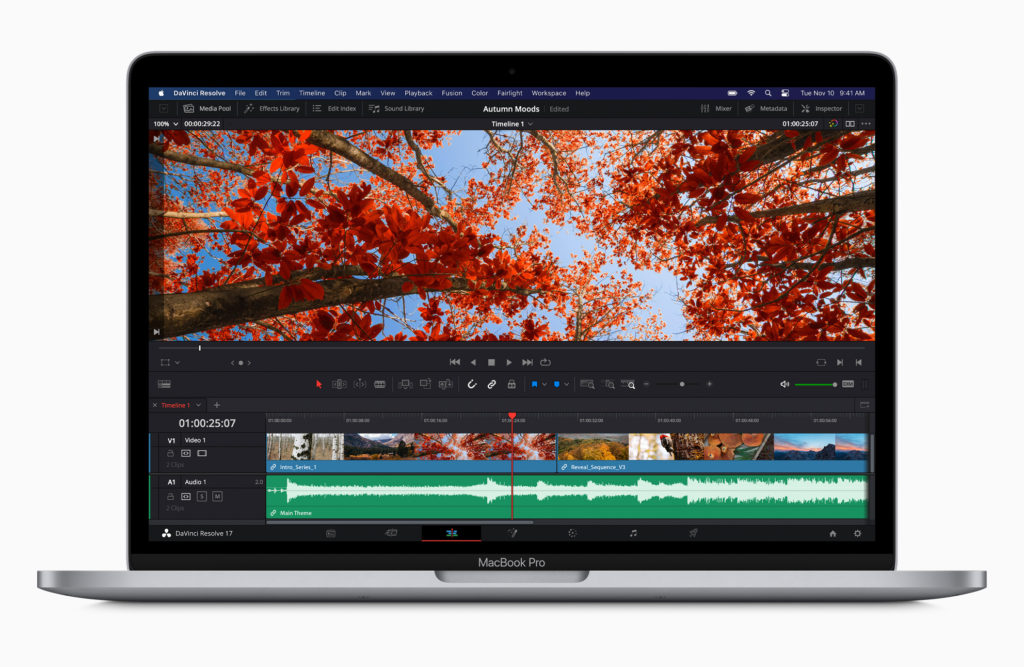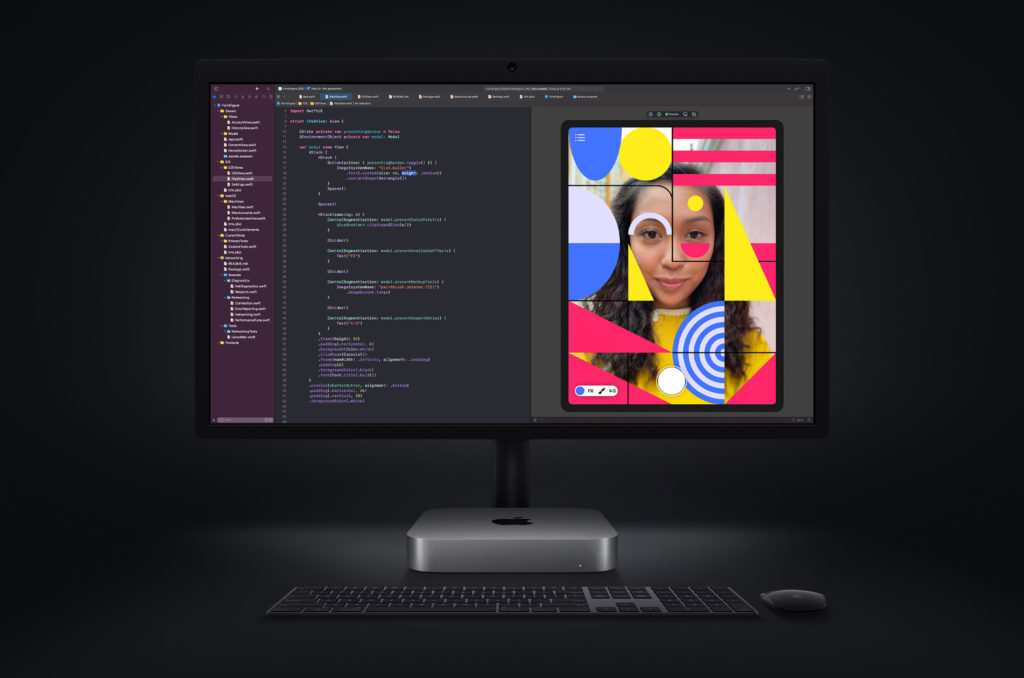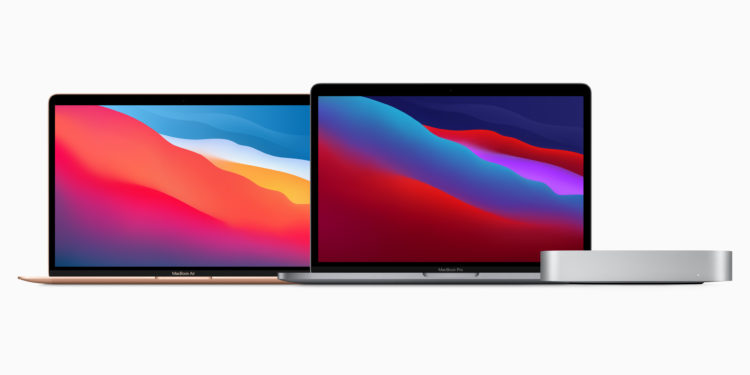The first Apple M1 Mac devices are currently being delivered to end customers. Various press representatives from major US platforms have received the new Apple Silicon Macs in advance. The first test reports have now been made available.
While the first orders are currently being delivered, test reports on the MacBook Air and Pro as well as the new Mac mini with M1 chip have now been officially published. As expected, performance and battery life are particularly praised - but there is a catch. This should be a good basis for the start - from here on, it can only get better. expressed Engadget commented on the MacBook Air's performance, with a particular focus on Safari, as follows:
My first thought when using the MacBook Air with M1 chip was, surprisingly, that it feels like an iPad Pro. It's shockingly responsive, as if it's waiting for the next command like an overeager puppy. Running apps natively designed for the M1, like Safari and GarageBand, felt just as fast as launching an iPad app. Most notably, Safari offers the best web browsing experience I've ever had on a computer. Web pages load almost instantly, and scrolling through complex pages feels effortless. It's like seeing the web for the first time—unencumbered by the crowds of increasingly sluggish desktop browsers.
M1 Macs: Battery life depends on app optimization
The Verge explained Among other things, the battery life of the new MacBook Air is impressive, even if it doesn't quite match Apple's claims. However, they note that battery life will also improve as more apps are optimized for the M1 chip:
I get between eight and ten hours, depending on how hard I work.
To be clear, I'm getting these numbers with the applications I actually use. This includes Chrome, of course, and various applications that also rely on the Chrome engine, like Slack. What's notable is that for some applications, Rosetta 2 has to do a bunch of real-time code translations, which further reduces battery life.
If and when these apps are adapted to become “universal” apps that work natively on M1 devices, I expect even better battery life.

According to The Verge's review, the new M1 MacBook Pro actually lasts "a few hours longer on a charge" than the Air. This could be a deciding factor for many users considering the choice between the MacBook Air and the MacBook Pro:
“MacBook Pro 13-inch has an advantage”
If you're trying to decide between the new 13-inch MacBook Pro and this MacBook Air, I think battery life will be the deciding factor for most people. In Nilay's testing, the Pro consistently got a few more hours on a charge. The Pro also has a Touch Bar and a slightly brighter screen. But the other big difference is that it has a fan. This makes the machine capable of running heavy workloads for longer periods of time. The same goes for the new Mac mini.
Meanwhile, TechCrunch has interesting things to say about iOS applications reportThese should at least be executable on M1 devices.
Apple may say that the Mac now supports millions of iOS applications, but the fact is that the experience of using those applications on the M1 is subpar. I have no doubt it will get better. But the experience of using the applications on the M1 right now is pretty much in this order: Native M1 application>Rosetta 2 application>Catalyst application>iOS applications. Assuming, of course, that the Catalyst ports can be made to build in Mac-centric behaviors and interactions. But it's clear that iOS, while present, is clearly not where it needs to be on M1 devices.
Apple M1: Developers must adapt iOS apps
Jason Snell of Six Colors came to the conclusionthat it is ultimately a “net plus” that iOS applications can run on the new Macs:
App developers can set their iOS apps to be invisible on the Mac and many have done just that. Want to watch videos in the Netflix app rather than in a browser tab? Too bad Netflix and most other video streaming services aren't available. Many productivity apps are also missing. Over the course of the days I've been working on this review, I've even noticed more iOS apps disappearing from the Mac App Store.
Ultimately, it's a net positive that some iOS applications will run on these new Macs. But I suspect it will take a while - a few months, maybe even longer - for this whole thing to play out. I suspect a lot of developers will want to do a little work to make their applications run a little better on the Mac. And Apple offers a path to that approach with Catalyst. Maybe it's a little counterintuitive, but I wonder if the ability to run iOS applications unmodified on macOS might motivate developers to do the extra work with Catalyst to make them more Mac-like.

Apple M1: Not everyone can switch immediately
TechCrunch also highlighted the battery life, as it was much closer to Apple's specifications than the guys at The Verge.
The new M1 chips are remarkably power efficient, even when performing more resource-intensive tasks. In a video playback test, I got 16 hours of battery life. That's less than Apple's claimed 18 hours, but it's still an impressive number.
By Matthew's numbers, the Pro fared even better. He managed to hit the claimed 20 hours. That higher number is likely due to the battery's higher capacity. In both cases, however, the systems outperformed last year's 13- and 16-inch Pros, which achieved eight hours and eight minutes and six hours and 40 minutes, respectively. That's a huge jump in an important metric.
On the whole, Apple seems to have succeeded in laying the foundation for the launch with the M1 chip - according to the numerous test reports. It is important to note that many apps still need to be adapted in order to get the most out of them. There will certainly be a target group that can switch over now - but this does not apply to every Mac user. Have you already discovered the early Black Friday offers on Amazon? It's worth being quick. (Image: Apple)





